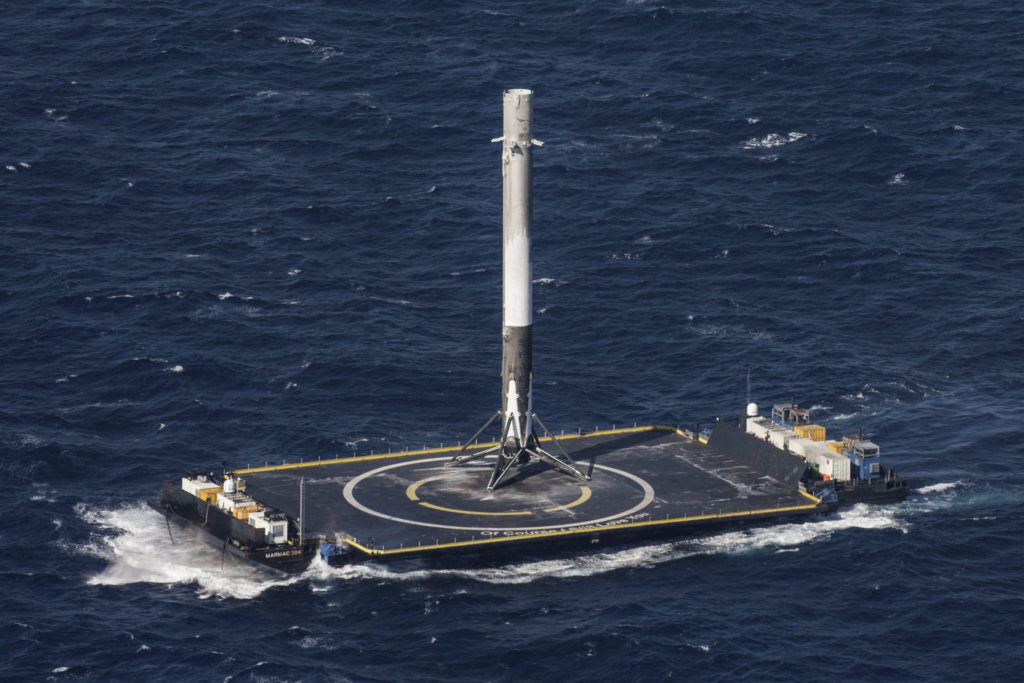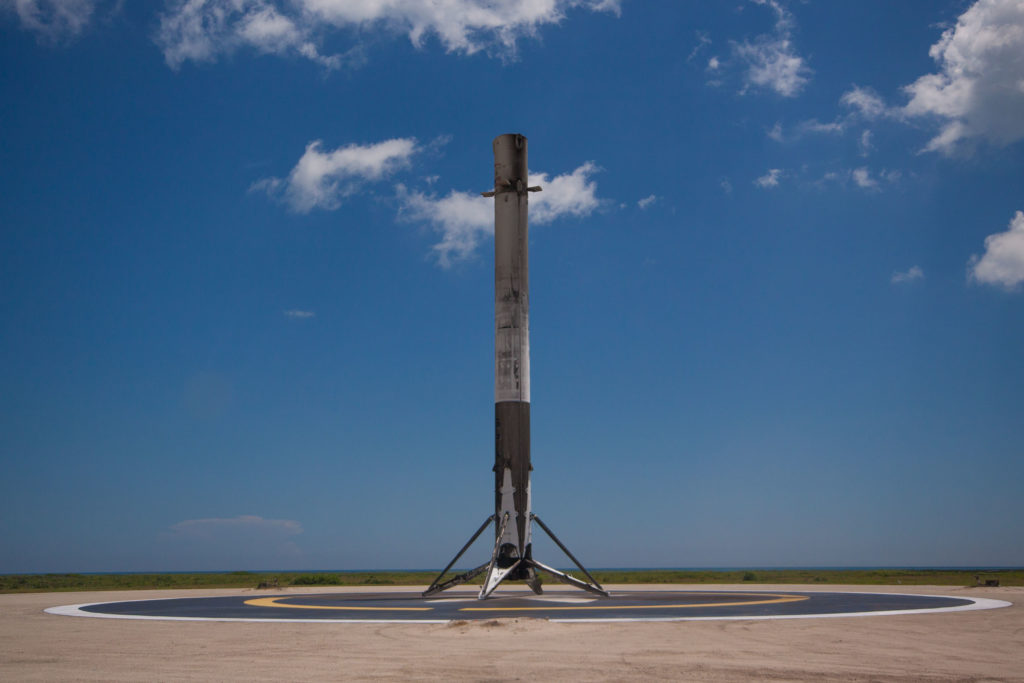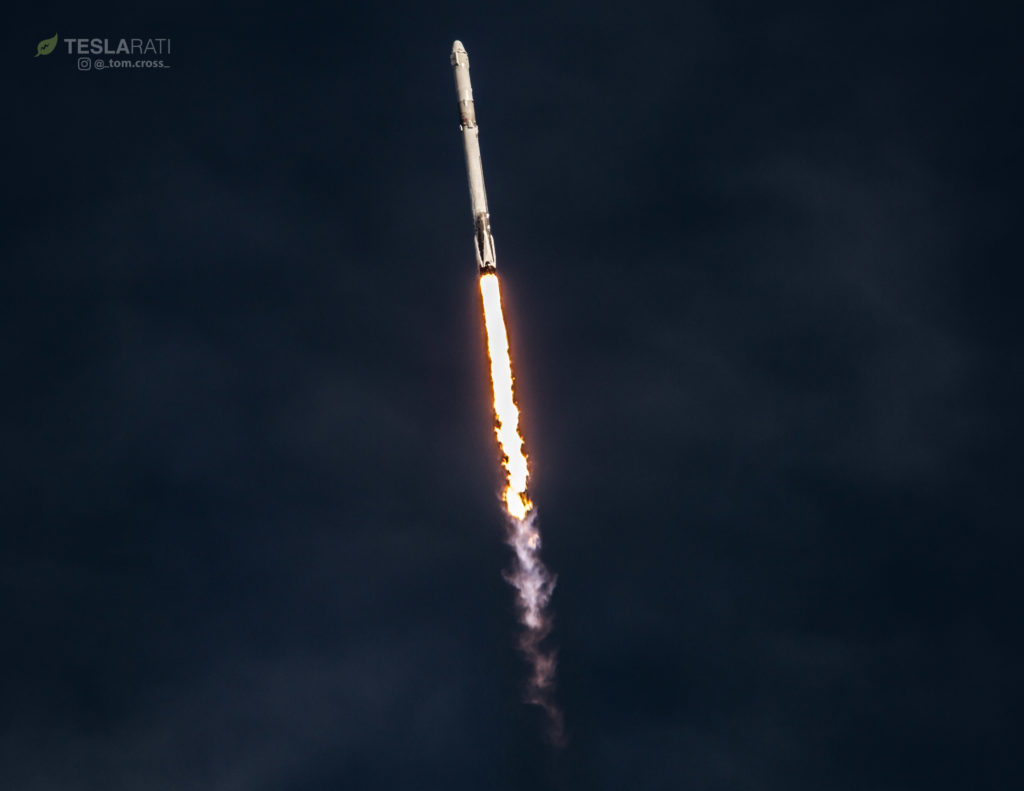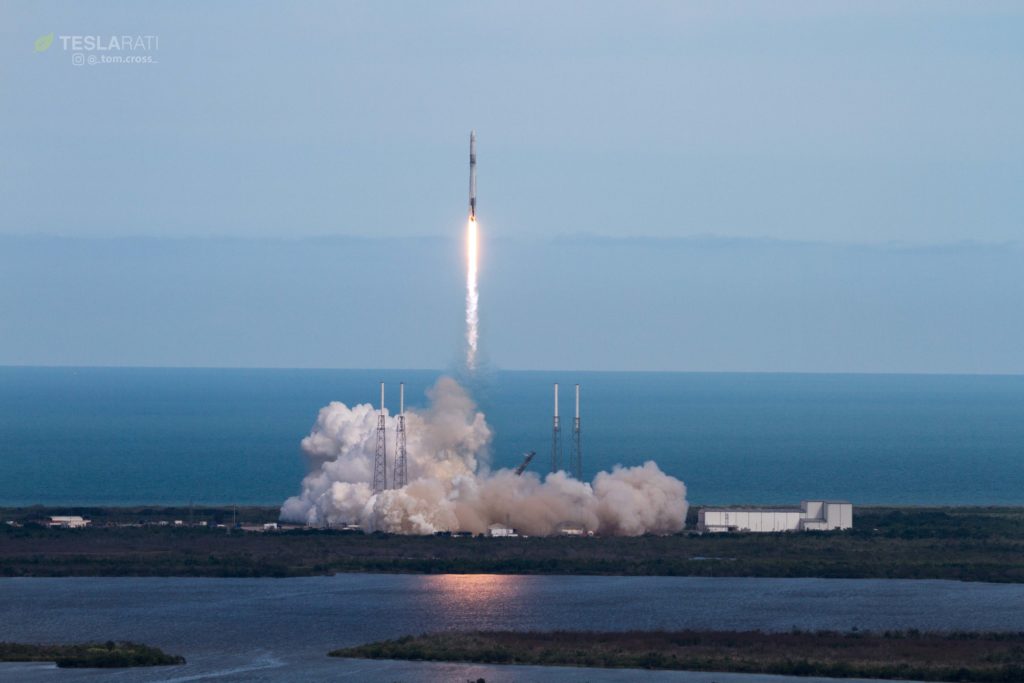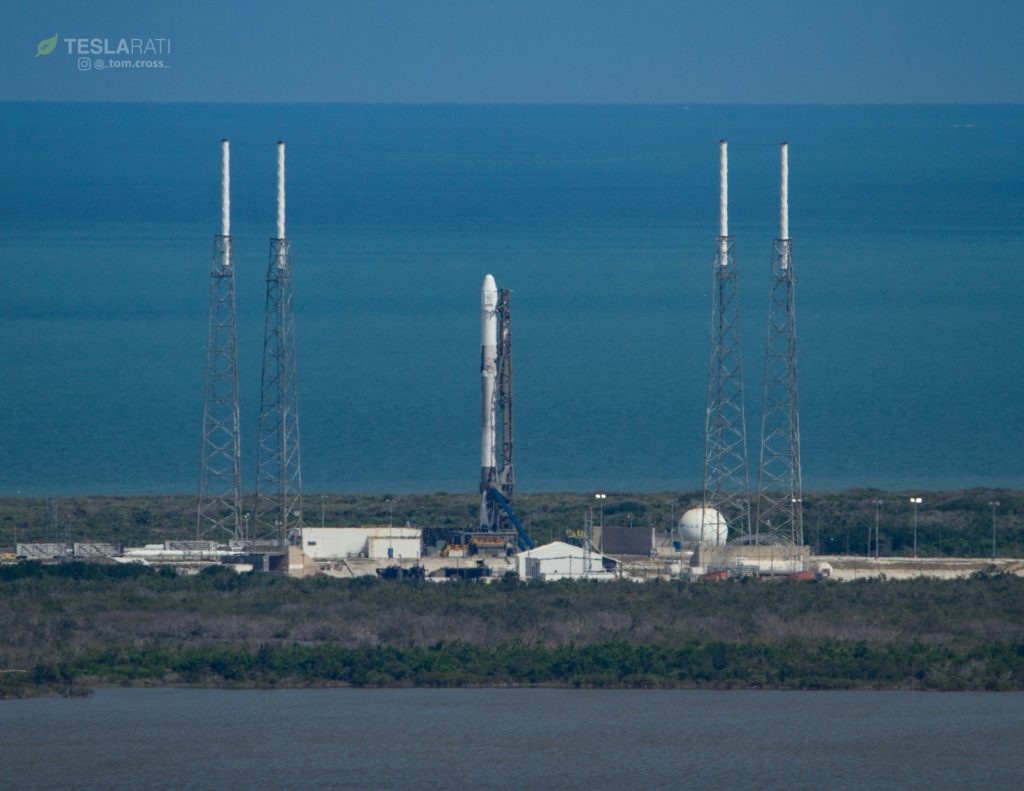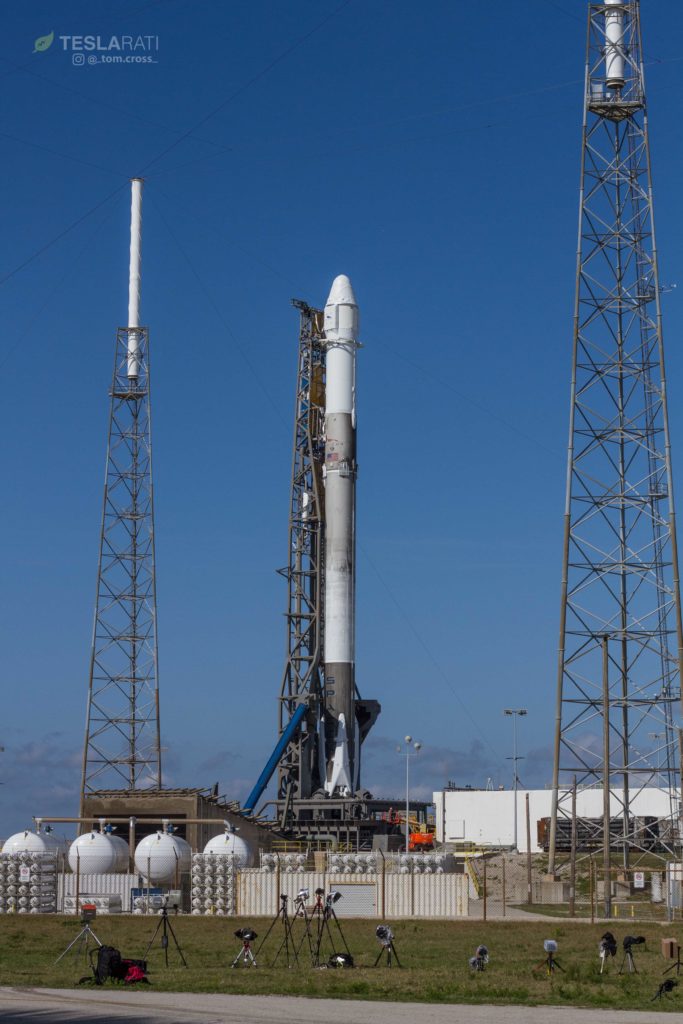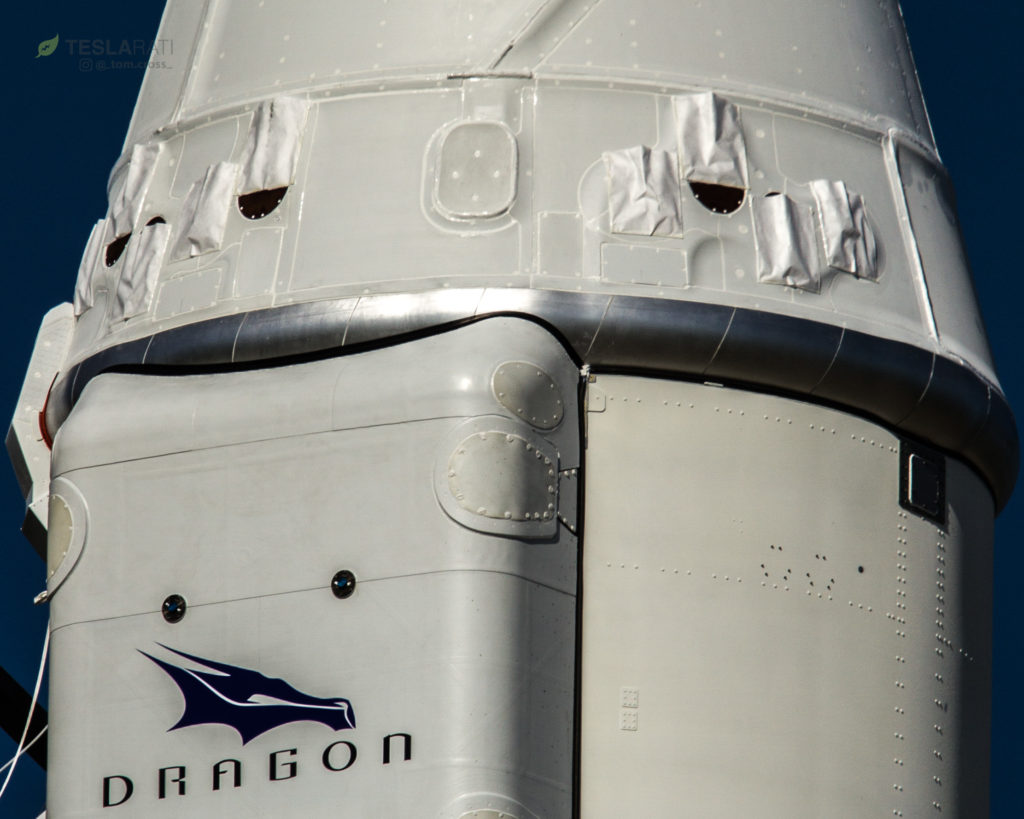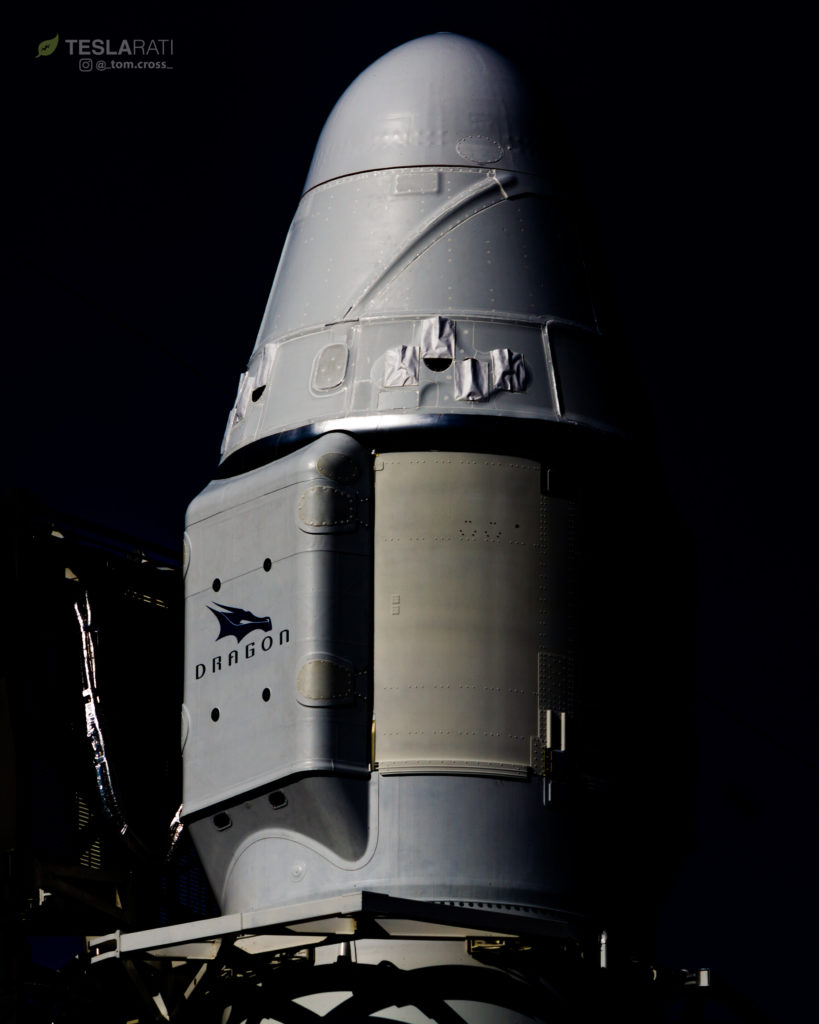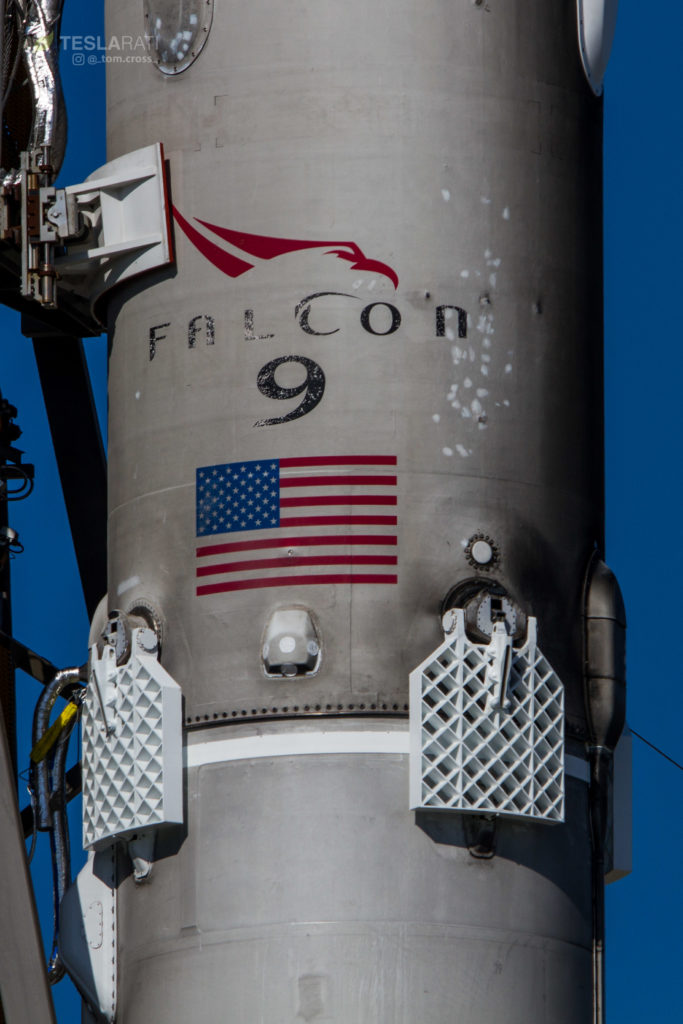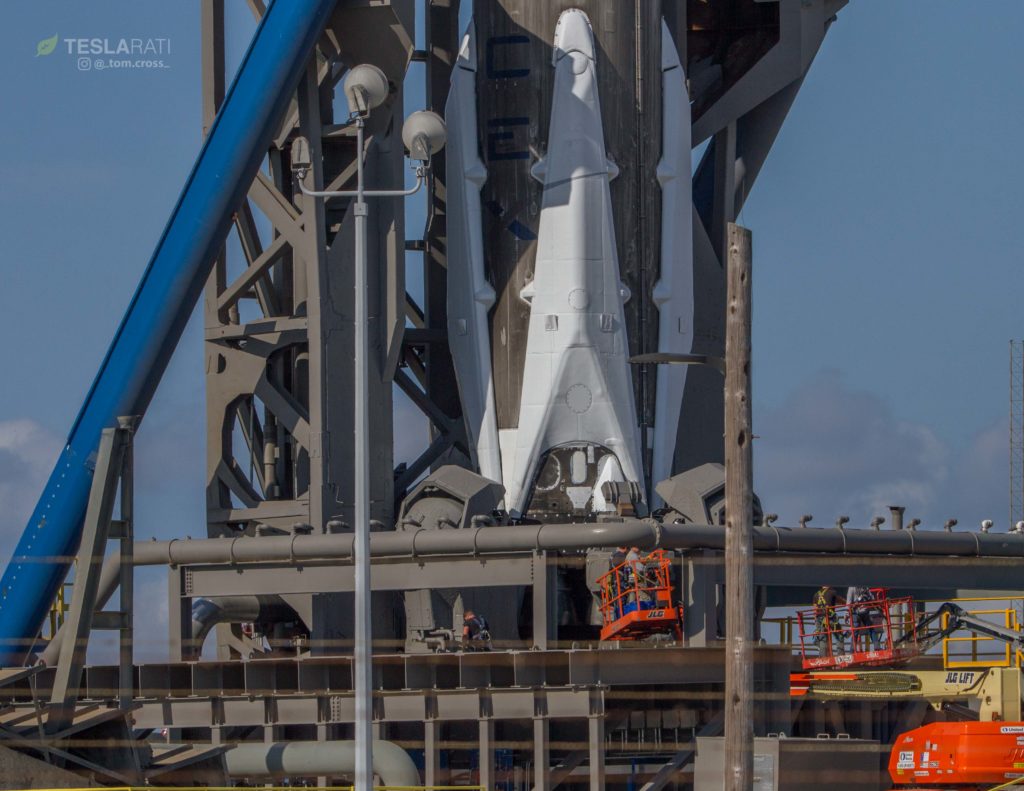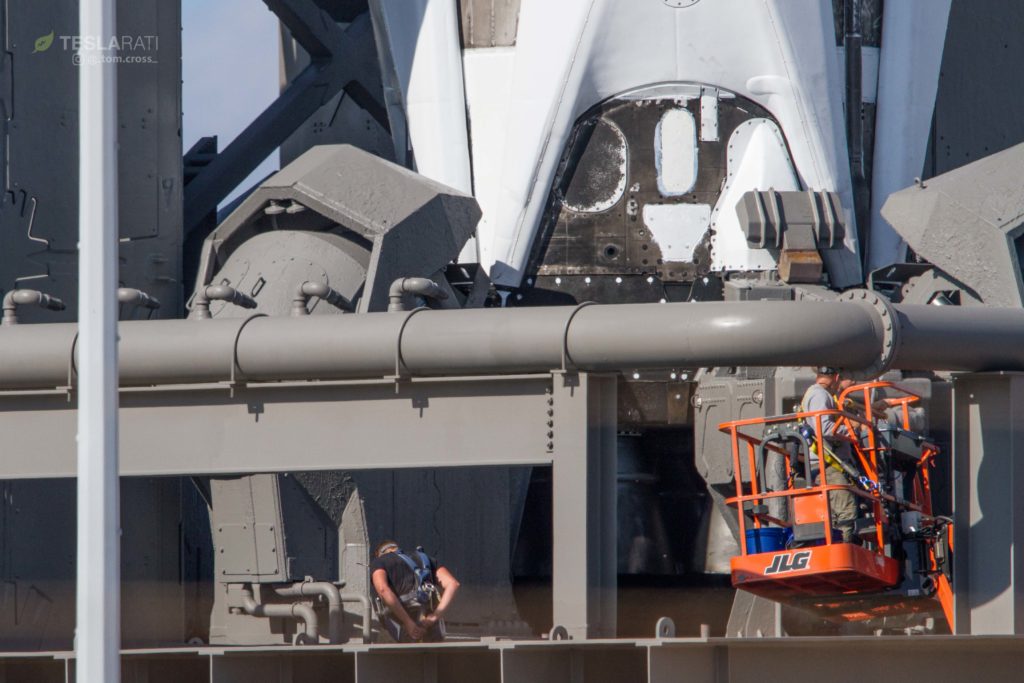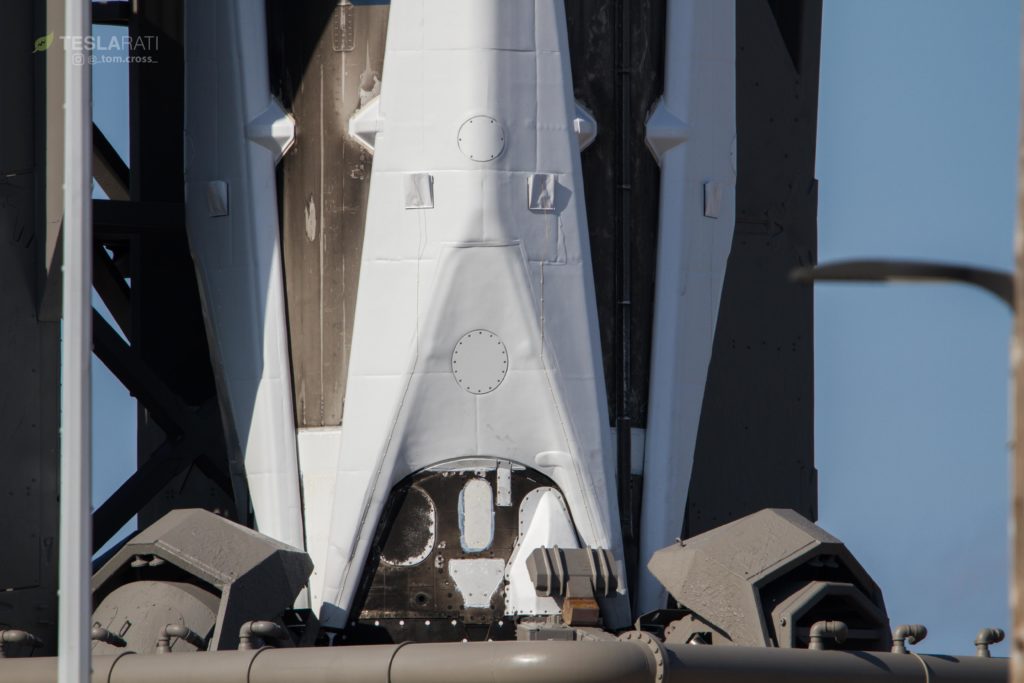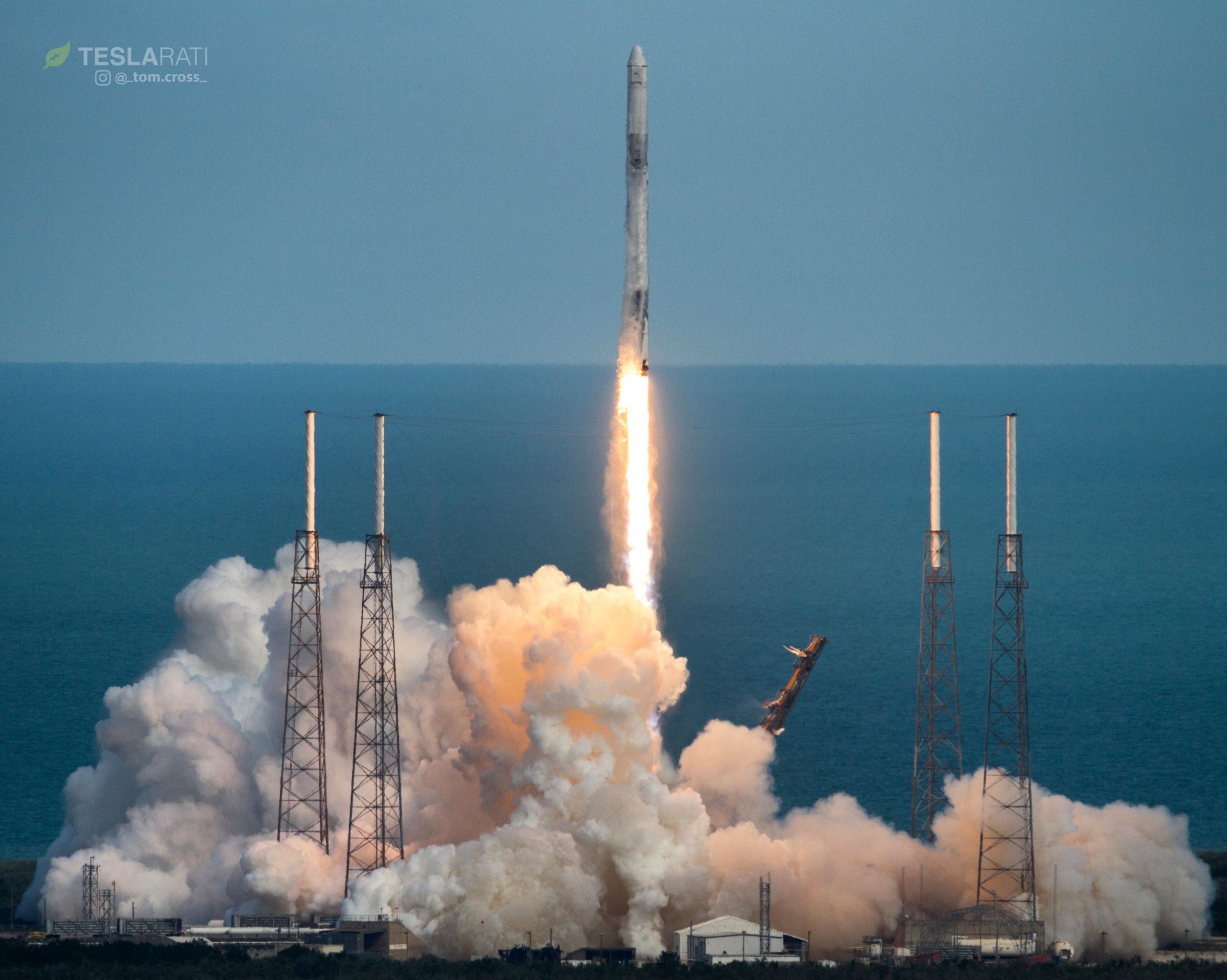
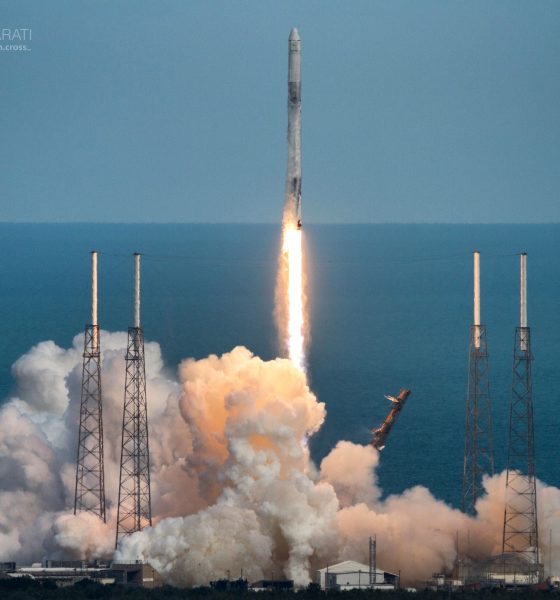
News
SpaceX continues water landing test in latest Space Station resupply mission
SpaceX has completed their second launch in less than four days, and the company’s 14th Cargo Dragon mission has successfully made it to a safe parking orbit where it will make its way to the International Space Station over the next two days.
Carrying nearly 5,800 pounds of perishables, experiments, and scientific equipment to be bolted to the outside of the ISS, this particular Cargo Dragon flew once before in 2016, while the booster that lifted it above Earth’s thin atmosphere was tasked with launching CRS-12 in August 2017. According to Jessica Jensen, SpaceX’s Director of Dragon Mission Management, this particularly Dragon capsule was the first to fly with upgraded water sealing, meaning that it was considerably easier (and thus cheaper) for SpaceX to refurbish and refly. The only items that had to be replaced this time around were the heatshield, trunk, and parachutes, and this experience will undoubtedly translate into Dragon 2 (Cargo Dragon), likely ensuring exceptional reuse characteristics for that the company’s next-gen capsule.
- CRS-8 also happened to mark the first successful ASDS recovery of a Falcon 9 booster. (SpaceX)
- Booster 1039 lands after successfully launching CRS-12’s Cargo Dragon into orbit. 1039 completed its final mission on Monday afternoon, April 2. (SpaceX)
Sadly, CRS-14’s doubly flight-proven launch also marked yet another expended booster – B1039 happened to be the first Block 4 version of Falcon 9’s stage to fly a mission. Jensen described that SpaceX – accustomed to making these decisions on a case-by-case basis – had chosen to expend this particular booster after concluding that the benefits of testing extreme booster trajectories and recovery profiles outweighed the difficulty (and cost) of refurbishing a Block 4 booster for a third launch. In this case, B1039 would have been the best option if SpaceX had any desire to fly a booster more than twice before the introduction of the purpose-driven, next-generation Block 5 reusability upgrade – Block 4 was clearly not built to fly more than twice without an uneconomical amount of refurbishment.
https://twitter.com/_TomCross_/status/980912458280947722
While no specific details were given and live coverage shown of the soft-landing, it’s presumed that B1039 continued in the footsteps of water landings that followed GovSat-1 and Hispasat 30W-6 in January 2018 and March 2018. These uniquely aggressive landing attempts are all believed to have ignited three Merlin 1D engines rather than the single engine typically ignited for landing burns, providing a more efficient use of propellant reserves at the cost of extreme acceleration (G) forces and far slimmer margins of error. The ultimate promise of these tests, if successful, is to allow SpaceX the option of recovering boosters during missions with heavier payloads and higher orbits.

SpaceX continues a cautious regiment of tests for the newest Falcon 9 upgrade, Block 5. (Reddit /u/HollywoodSX)
The imminent NET April 24 inaugural launch of SpaceX’s rapid reuse Falcon 9 “Block 5” will mark the beginning of a new era of rocketry for SpaceX, where expendable missions are likely to become a rarity. Expending a single Block 5 booster could fairly be perceived as throwing away the potential revenue and income from anywhere from 5-100 future re-flights. As such, SpaceX has every reason to expend non-Block 5 boosters with the hope of ensuring that fewer new-generation rockets end up expended after launch.
This rocket was meant to test very high retrothrust landing in water so it didn’t hurt the droneship, but amazingly it has survived. We will try to tow it back to shore. pic.twitter.com/hipmgdnq16
— Elon Musk (@elonmusk) January 31, 2018
Intriguingly, Jensen also noted in a prelaunch briefing that SpaceX’s Cargo Dragons are certified for as many as three orbital reuses – a possibility as SpaceX steps towards completing all 20 of its contracted CRS-1 missions, the final five of which are scheduled to resupply the ISS between now and early 2020. After the final CRS-1 launch, NASA has already awarded SpaceX and Orbital ATK contracts for CRS-2, a second Commercial Resupply Services contract that will begin in 2020 and fly on OATK’s upgraded Cygnus and SpaceX Dragon 2, potentially repurposing recovered Crew capsules in the case of SpaceX.
Up next on the SpaceX calendar are a number of conferences and presentations over the next two or three weeks, followed by SpaceX NASA TESS mission on April 16 and the debut of Falcon 9 Block 5 for the launch of Bangabandhu-1, April 24. SES-12 may be launched sometime in early May or late April, and the next West coast launch of Iridium-6/GRACE-FO is expected to occur NET May 10.
- CRS-14. (Tom Cross)
- CRS-14. (Tom Cross)
- CRS-14. (Tom Cross)
- CRS-14. (Tom Cross)
- CRS-14. (Tom Cross)
- CRS-14. (Tom Cross)
- CRS-14. (Tom Cross)
- SpaceX technicians work at the base of Falcon 9 B1039 ahead of launch, CRS-14. (Tom Cross)
- CRS-14. (Tom Cross)
- CRS-14. (Tom Cross)
Follow us for live updates, behind-the-scenes sneak peeks, and a sea of beautiful photos from our East and West coast photographers.
Teslarati – Instagram – Twitter
Tom Cross – Twitter
Pauline Acalin – Twitter
Eric Ralph – Twitter

News
Tesla FSD fleet is nearing 7 billion total miles, including 2.5 billion city miles
As can be seen on Tesla’s official FSD webpage, vehicles equipped with the system have now navigated over 6.99 billion miles.

Tesla’s Full Self-Driving (Supervised) fleet is closing in on almost 7 billion total miles driven, as per data posted by the company on its official FSD webpage.
These figures hint at the massive scale of data fueling Tesla’s rapid FSD improvements, which have been quite notable as of late.
FSD mileage milestones
As can be seen on Tesla’s official FSD webpage, vehicles equipped with the system have now navigated over 6.99 billion miles. Tesla owner and avid FSD tester Whole Mars Catalog also shared a screenshot indicating that from the nearly 7 billion miles traveled by the FSD fleet, more than 2.5 billion miles were driven inside cities.
City miles are particularly valuable for complex urban scenarios like unprotected turns, pedestrian interactions, and traffic lights. This is also the difference-maker for FSD, as only complex solutions, such as Waymo’s self-driving taxis, operate similarly on inner-city streets. And even then, incidents such as the San Francisco blackouts have proven challenging for sensor-rich vehicles like Waymos.
Tesla’s data edge
Tesla has a number of advantages in the autonomous vehicle sector, one of which is the size of its fleet and the number of vehicles training FSD on real-world roads. Tesla’s nearly 7 billion FSD miles then allow the company to roll out updates that make its vehicles behave like they are being driven by experienced drivers, even if they are operating on their own.
So notable are Tesla’s improvements to FSD that NVIDIA Director of Robotics Jim Fan, after experiencing FSD v14, noted that the system is the first AI that passes what he described as a “Physical Turing Test.”
“Despite knowing exactly how robot learning works, I still find it magical watching the steering wheel turn by itself. First it feels surreal, next it becomes routine. Then, like the smartphone, taking it away actively hurts. This is how humanity gets rewired and glued to god-like technologies,” Fan wrote in a post on X.
News
Tesla starts showing how FSD will change lives in Europe
Local officials tested the system on narrow country roads and were impressed by FSD’s smooth, human-like driving, with some calling the service a game-changer for everyday life in areas that are far from urban centers.

Tesla has launched Europe’s first public shuttle service using Full Self-Driving (Supervised) in the rural Eifelkreis Bitburg-Prüm region of Germany, demonstrating how the technology can restore independence and mobility for people who struggle with limited transport options.
Local officials tested the system on narrow country roads and were impressed by FSD’s smooth, human-like driving, with some calling the service a game-changer for everyday life in areas that are far from urban centers.
Officials see real impact on rural residents
Arzfeld Mayor Johannes Kuhl and District Administrator Andreas Kruppert personally tested the Tesla shuttle service. This allowed them to see just how well FSD navigated winding lanes and rural roads confidently. Kruppert said, “Autonomous driving sounds like science fiction to many, but we simply see here that it works totally well in rural regions too.” Kuhl, for his part, also noted that FSD “feels like a very experienced driver.”
The pilot complements the area’s “Citizen Bus” program, which provides on-demand rides for elderly residents who can no longer drive themselves. Tesla Europe shared a video of a demonstration of the service, highlighting how FSD gives people their freedom back, even in places where public transport is not as prevalent.
What the Ministry for Economic Affairs and Transport says
Rhineland-Palatinate’s Minister Daniela Schmitt supported the project, praising the collaboration that made this “first of its kind in Europe” possible. As per the ministry, the rural rollout for the service shows FSD’s potential beyond major cities, and it delivers tangible benefits like grocery runs, doctor visits, and social connections for isolated residents.
“Reliable and flexible mobility is especially vital in rural areas. With the launch of a shuttle service using self-driving vehicles (FSD supervised) by Tesla in the Eifelkreis Bitburg-Prüm, an innovative pilot project is now getting underway that complements local community bus services. It is the first project of its kind in Europe.
“The result is a real gain for rural mobility: greater accessibility, more flexibility and tangible benefits for everyday life. A strong signal for innovation, cooperation and future-oriented mobility beyond urban centers,” the ministry wrote in a LinkedIn post.
News
Tesla China quietly posts Robotaxi-related job listing
Tesla China is currently seeking a Low Voltage Electrical Engineer to work on circuit board design for the company’s autonomous vehicles.

Tesla has posted a new job listing in Shanghai explicitly tied to its Robotaxi program, fueling speculation that the company is preparing to launch its dedicated autonomous ride-hailing service in China.
As noted in the listing, Tesla China is currently seeking a Low Voltage Electrical Engineer to work on circuit board design for the company’s autonomous vehicles.
Robotaxi-specific role
The listing, which was shared on social media platform X by industry watcher @tslaming, suggested that Tesla China is looking to fill the role urgently. The job listing itself specifically mentions that the person hired for the role will be working on the Low Voltage Hardware team, which would design the circuit boards that would serve as the nervous system of the Robotaxi.
Key tasks for the role, as indicated in the job listing, include collaboration with PCB layout, firmware, mechanical, program management, and validation teams, among other responsibilities. The role is based in Shanghai.
China Robotaxi launch
China represents a massive potential market for robotaxis, with its dense urban centers and supportive policies in select cities. Tesla has limited permission to roll out FSD in the country, though despite this, its vehicles have been hailed as among the best in the market when it comes to autonomous features. So far, at least, it appears that China supports Tesla’s FSD and Robotaxi rollout.
This was hinted at in November, when Tesla brought the Cybercab to the 8th China International Import Expo (CIIE) in Shanghai, marking the first time that the autonomous two-seater was brought to the Asia-Pacific region. The vehicle, despite not having a release date in China, received a significant amount of interest among the event’s attendees.
